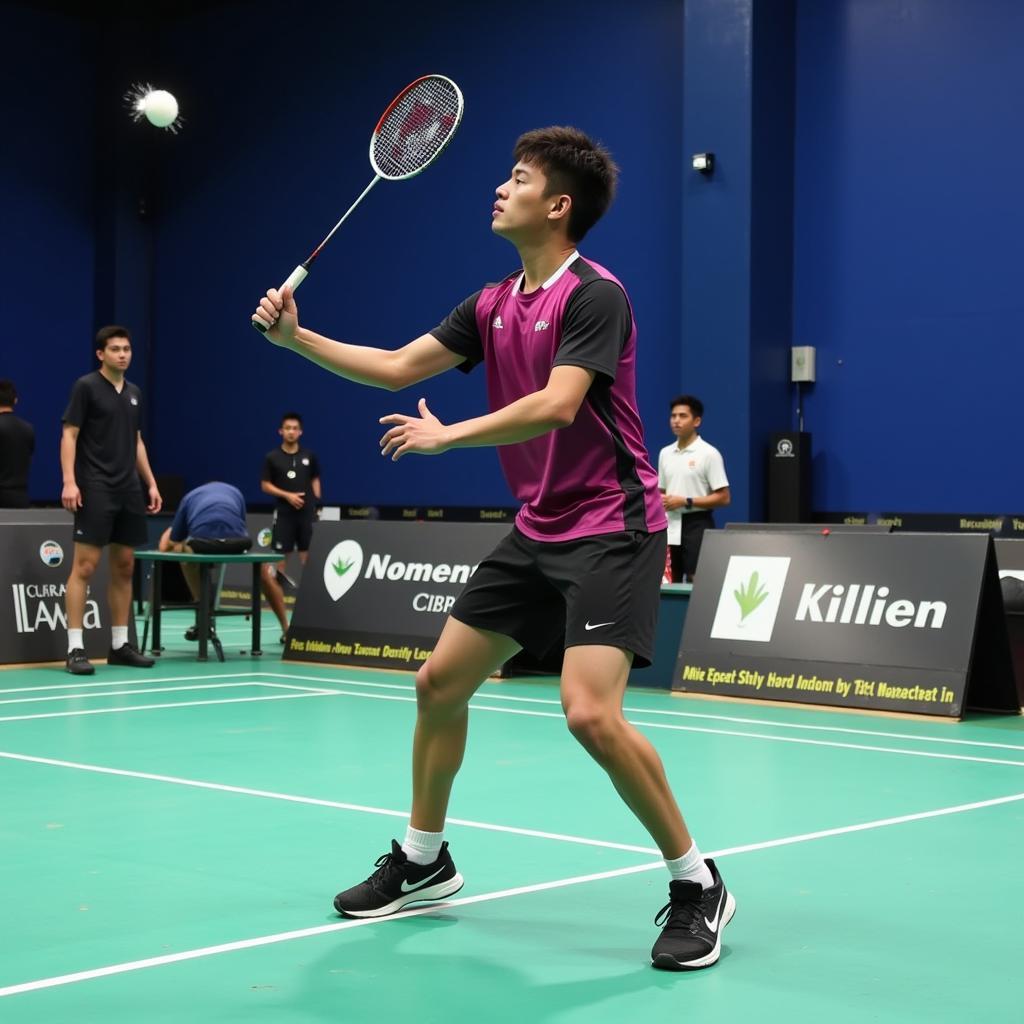Defensive Stances in Badminton: Mastering the Art of Court Coverage
October 24, 2024Badminton, a sport of agility, precision, and strategy, demands mastery over both offensive and defensive techniques. While attacking shots may steal the limelight, a solid defensive stance forms the bedrock of a winning game. This article delves into the intricacies of defensive stances in badminton, equipping you with the knowledge to anticipate shots, react swiftly, and build a formidable defense on the court.
The Importance of a Strong Defensive Stance
A strong defensive stance is crucial for several reasons:
- Quick Reactions: A balanced and alert stance allows you to react to your opponent’s shots with speed and agility.
- Anticipation: A good defensive stance helps you read your opponent’s body language and anticipate their shots more effectively.
- Court Coverage: Proper positioning and footwork stem from a solid stance, enabling you to cover the court efficiently.
- Reduced Errors: A stable stance minimizes unforced errors, especially when receiving powerful smashes or tricky drop shots.
Basic Defensive Stances
Two fundamental stances form the basis of badminton defense:
1. Ready Stance:
 Ready Stance in Badminton
Ready Stance in Badminton
- Stand with your feet shoulder-width apart, knees slightly bent.
- Distribute your weight evenly on the balls of your feet.
- Hold your racket in front of you, slightly above waist height, with your grip prepared for both forehand and backhand shots.
- Keep your head up and your eyes fixed on the opponent.
2. Defensive Stance:
- Similar to the ready stance, but with a lower center of gravity.
- Bend your knees more, pushing your hips back slightly.
- Raise your racket hand slightly higher to react to smashes and drives.
- Stay light on your feet, ready to move explosively in any direction.
“A strong defensive stance is like a coiled spring,” says former Malaysian badminton champion, Rashid Sidek. “It’s about being ready to unleash power and speed in any direction at a moment’s notice.”
Footwork and Movement
- Side-to-Side Shuffles: Used to cover the court horizontally. Take small, quick steps, maintaining a low center of gravity.
- Chasse Steps: Used for larger movements across the court. This involves a push-off from one foot followed by a quick closing of the other foot.
- Lunges: Essential for reaching shots hit away from your body. Extend one leg forward, keeping the other leg bent to provide balance.
Tactical Considerations
- Observe Your Opponent: Analyze their strengths and weaknesses. Are they aggressive smashers or do they prefer drop shots? Adjust your stance and court positioning accordingly.
- Mix Up Your Shots: Don’t be predictable. Alternate between high clears, drop shots, and drives to keep your opponent guessing and force them into defensive positions.
- Control the Net: A strong defensive player often dictates the pace of the rally. Push your opponent to the backcourt and control the net area for strategic advantage.
Common Defensive Shots
- High Clear: A defensive shot hit high and deep, aiming to give you time to recover to your base position.
- Drop Shot: A deceptive shot that falls softly over the net, forcing your opponent to move forward.
- Net Lift: A defensive shot used when caught close to the net, lifting the shuttlecock high and towards the backcourt.
Conclusion
Mastering defensive stances and footwork is crucial for any badminton player aiming to elevate their game. By honing these techniques, you transform from a passive receiver to an active defender, dictating the flow of the rally and frustrating your opponents. Remember, a strong defense paves the way for counter-attacking opportunities and ultimately, victory on the badminton court.
FAQs
1. What is the most important aspect of a defensive stance?
The most important aspect is balance. A balanced stance allows for quick reactions and efficient movement in any direction.
2. How low should my center of gravity be in a defensive stance?
It varies depending on the situation. Generally, a lower center of gravity allows for faster reactions, especially to smashes.
3. Should I always be in a defensive stance?
No. Switch between the ready stance and defensive stance based on the situation. The ready stance is more versatile, while the defensive stance is ideal when anticipating an attack.
For further guidance on improving your badminton skills, explore these resources:
Need personalized coaching or have specific questions? Contact us!
Phone: 0396443476
Email: [email protected]
Address: 23 Tháng 3, Đắk Nia, Gia Nghĩa, Đắk Nông, Việt Nam
Our dedicated team is available 24/7 to assist you on your badminton journey!